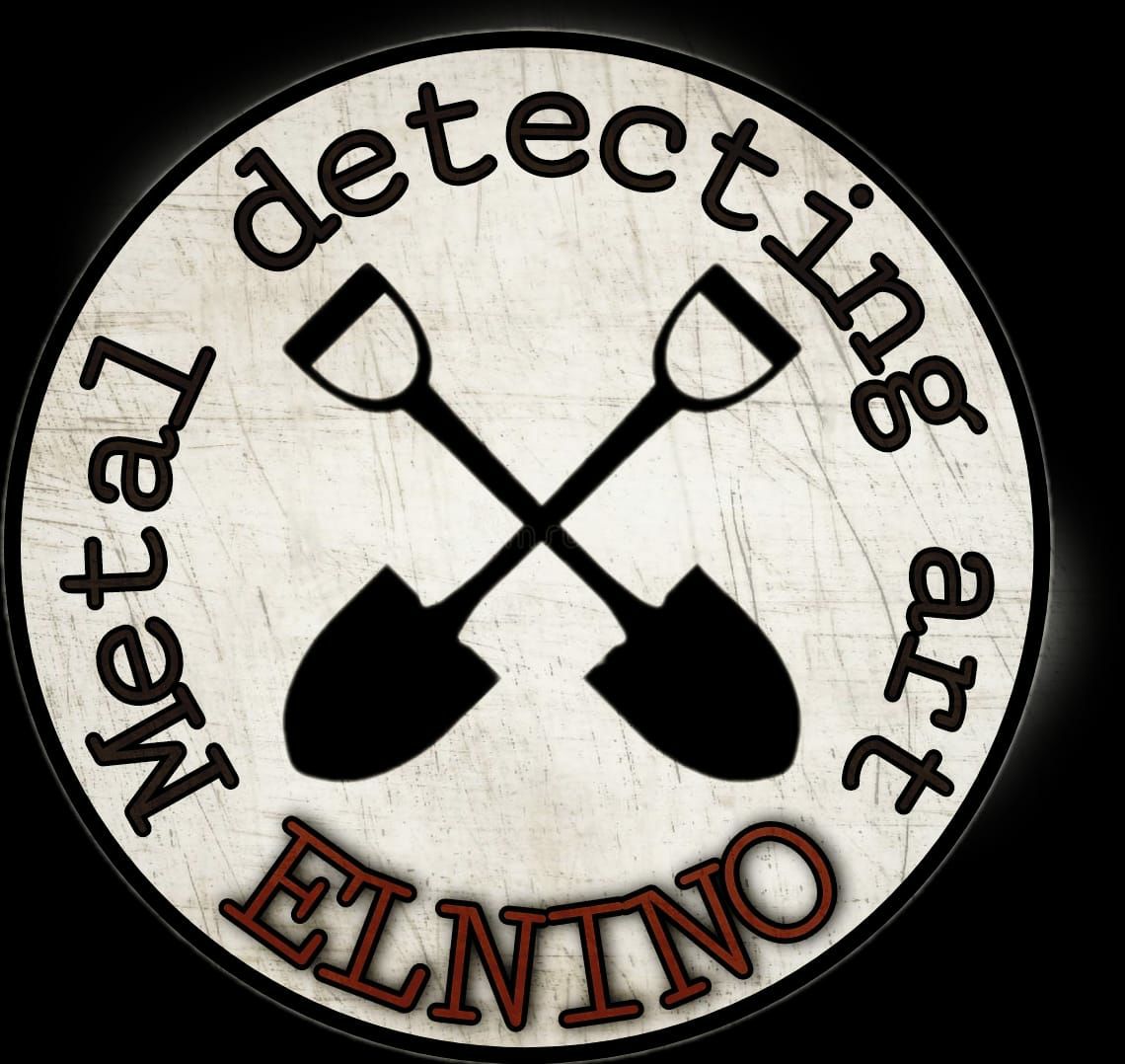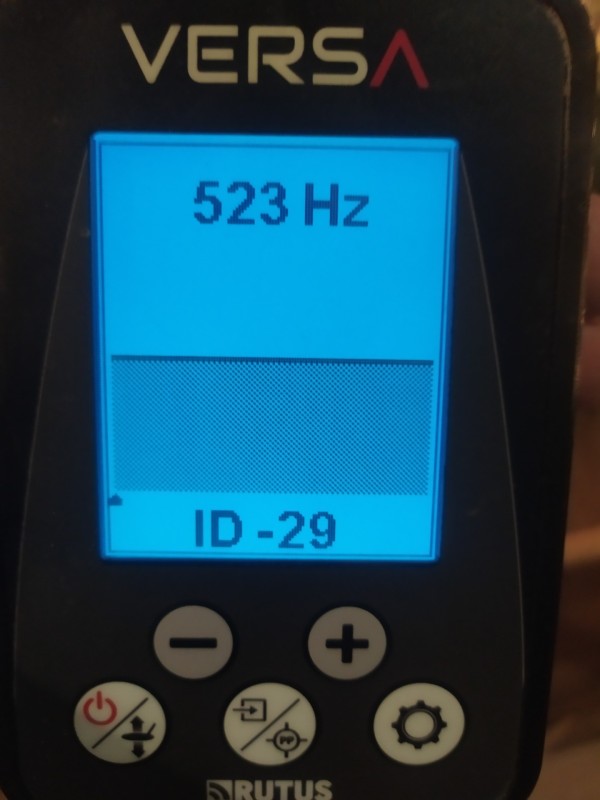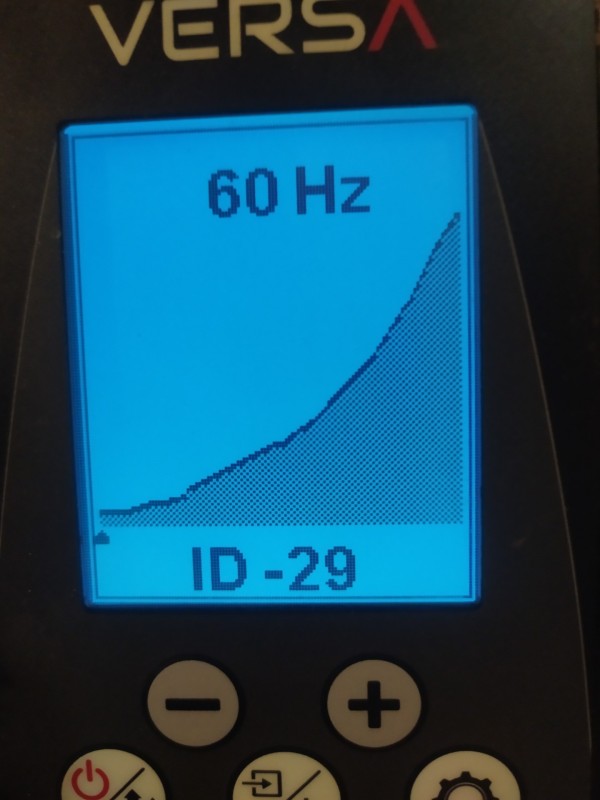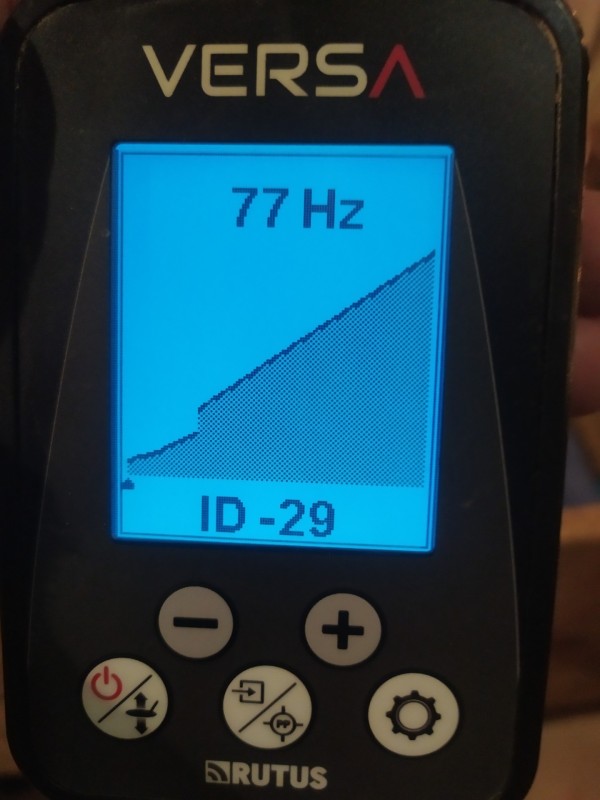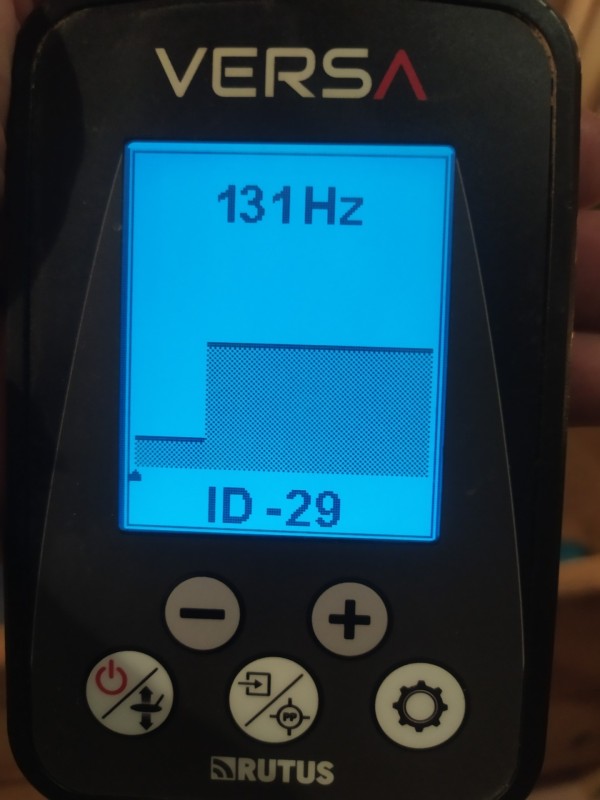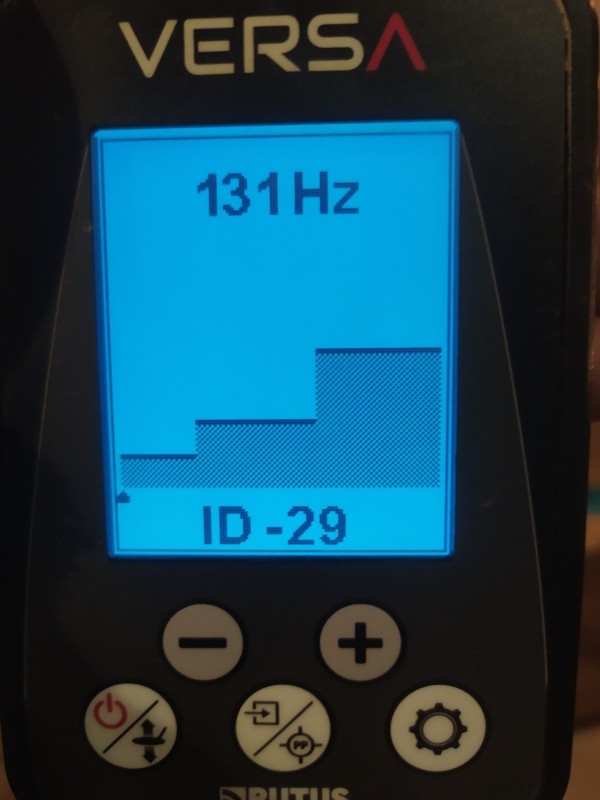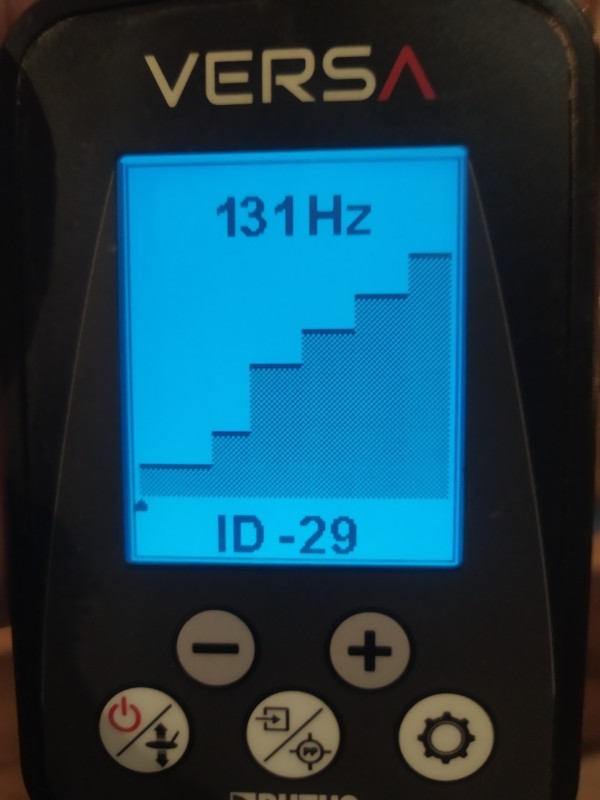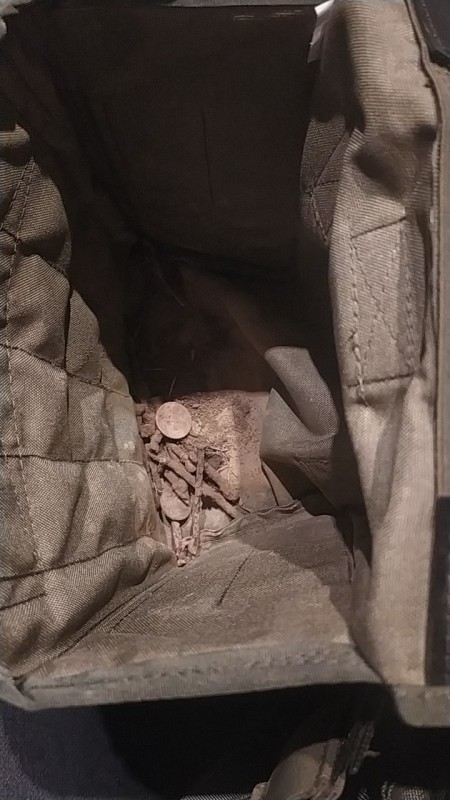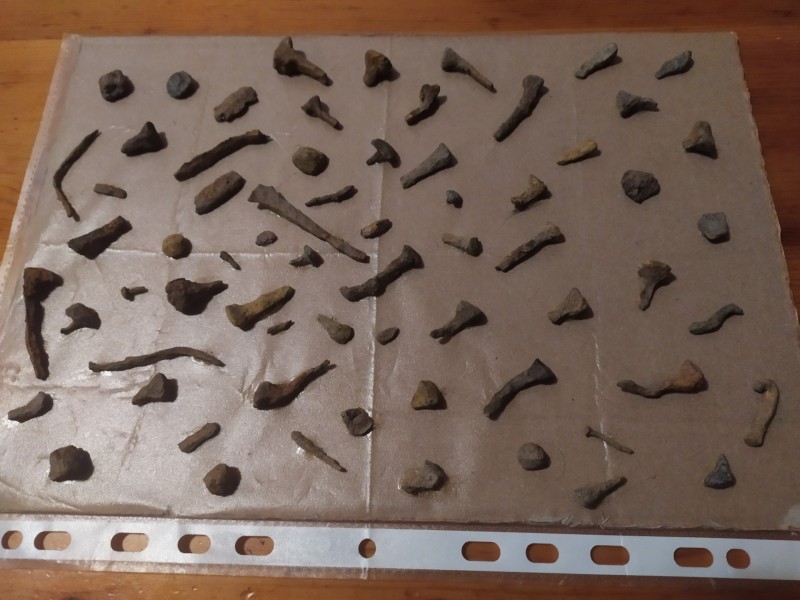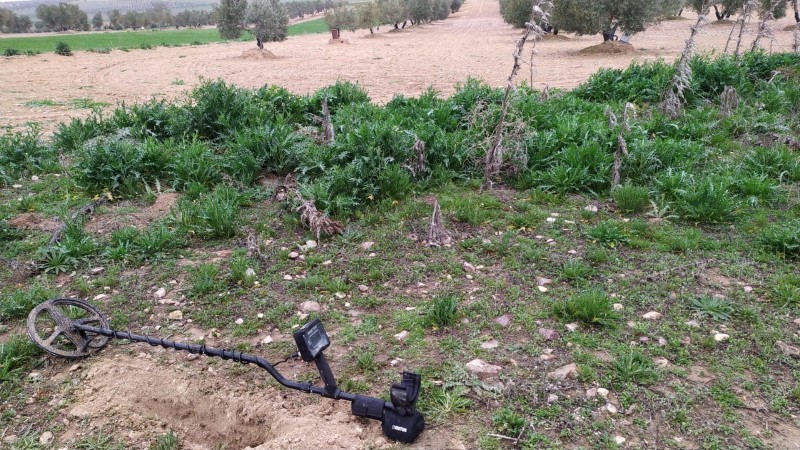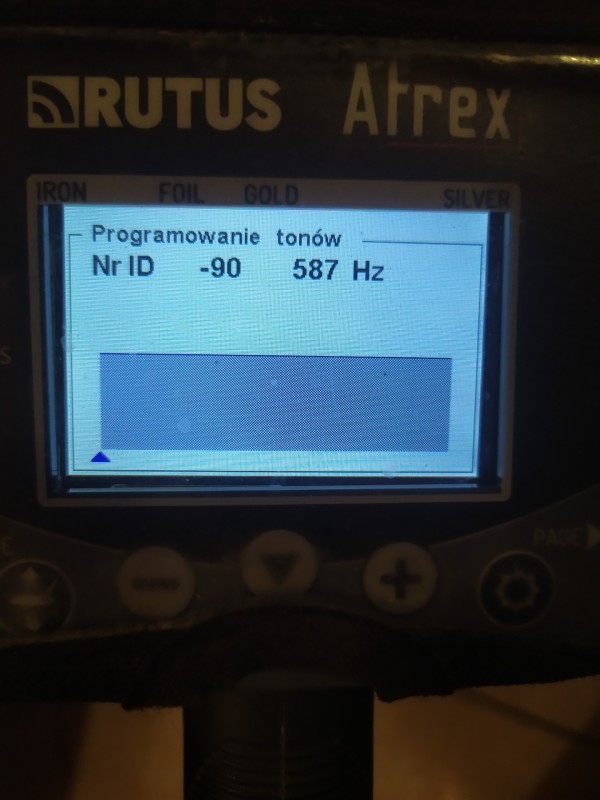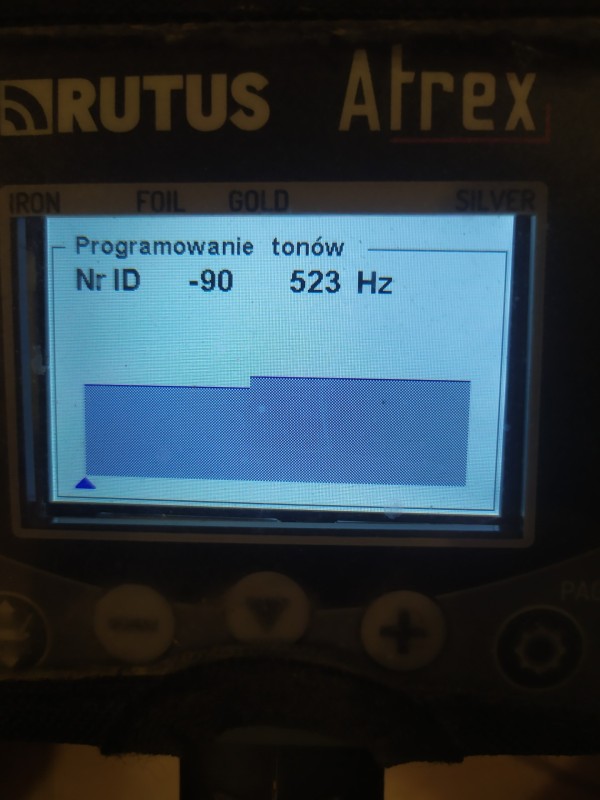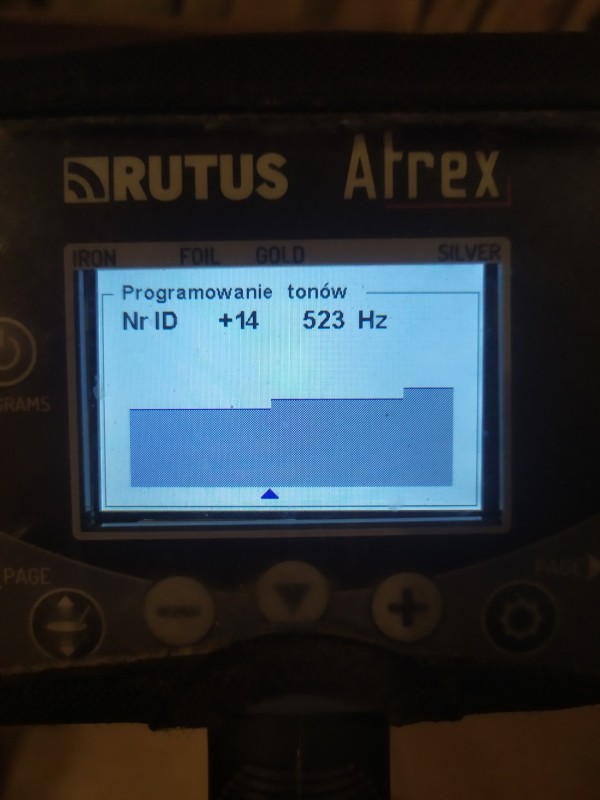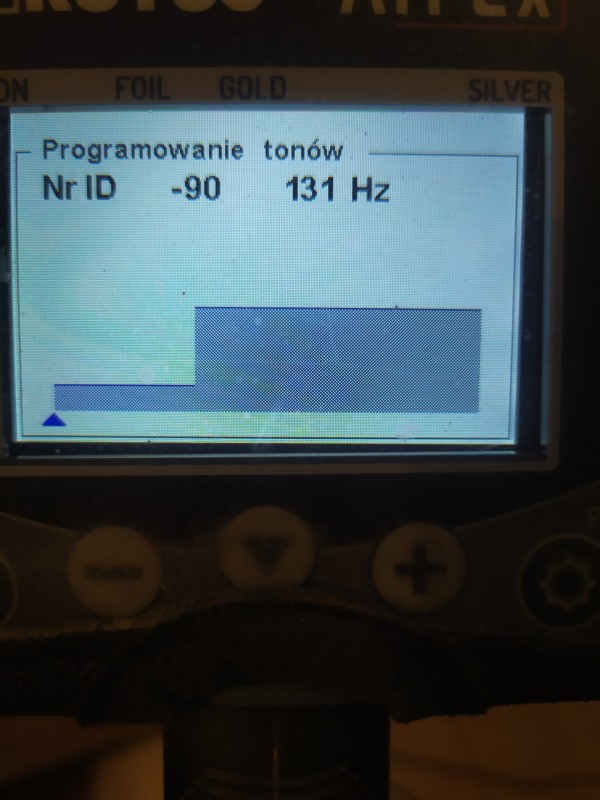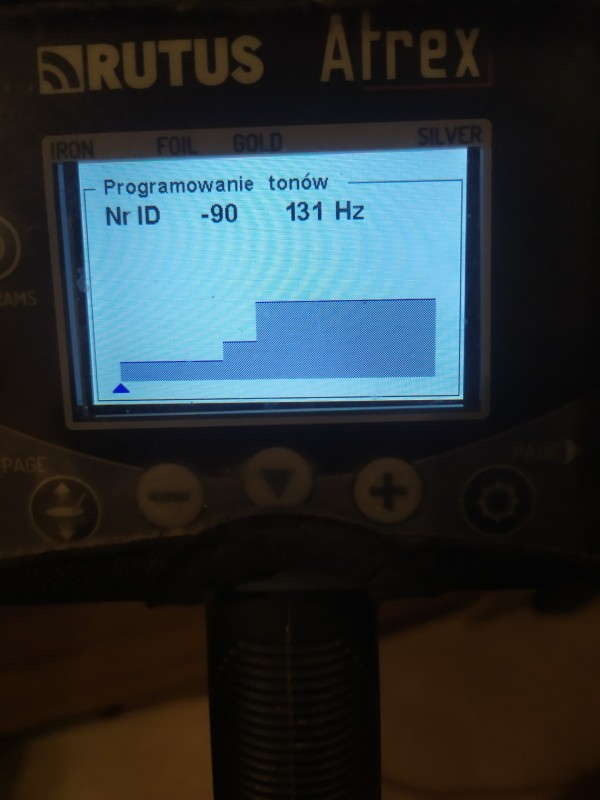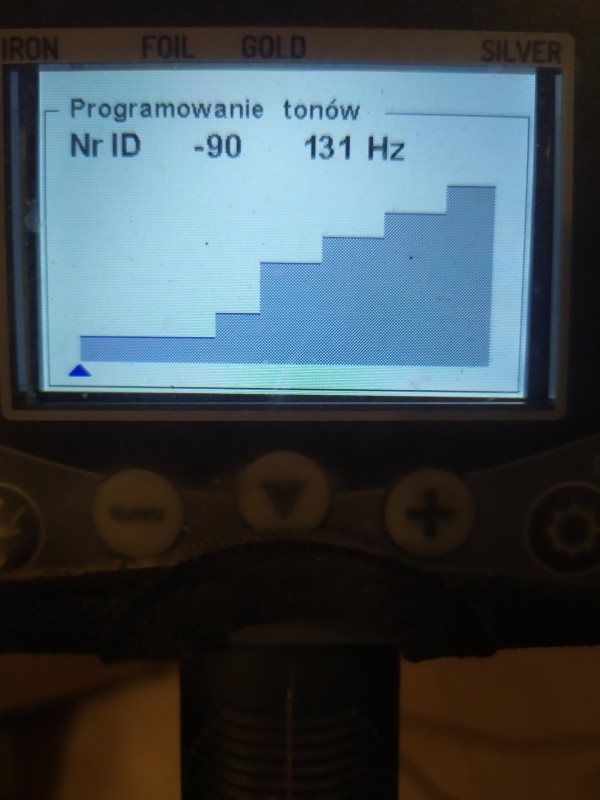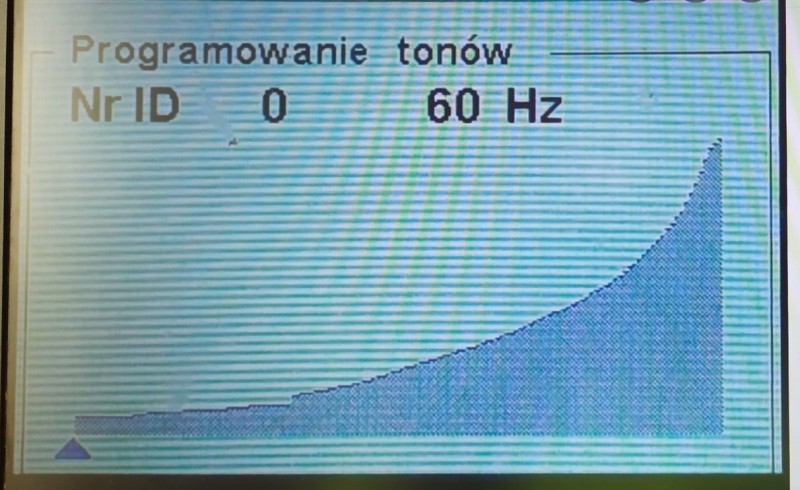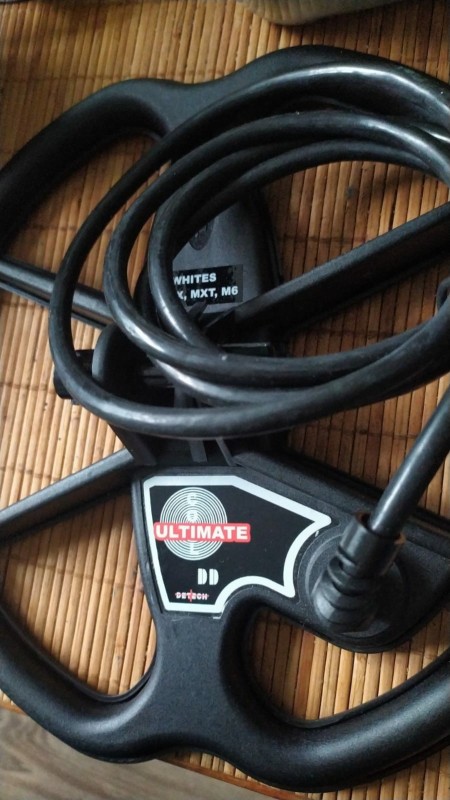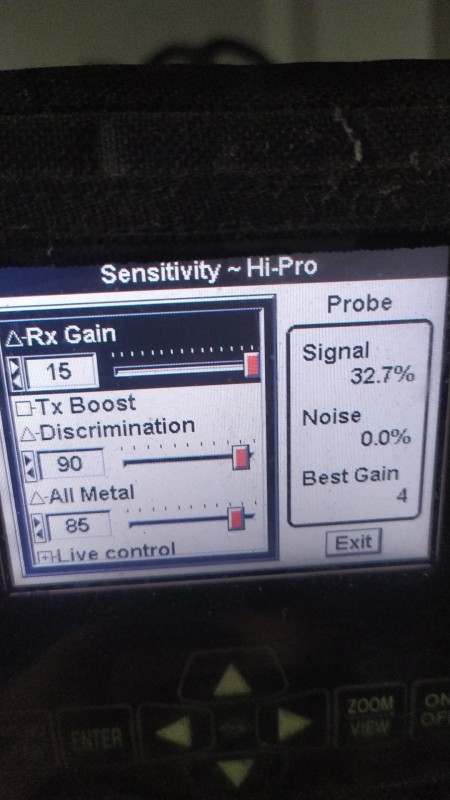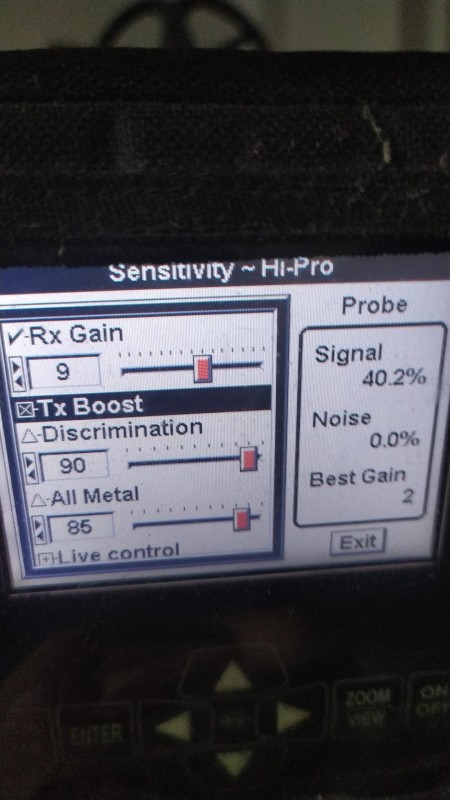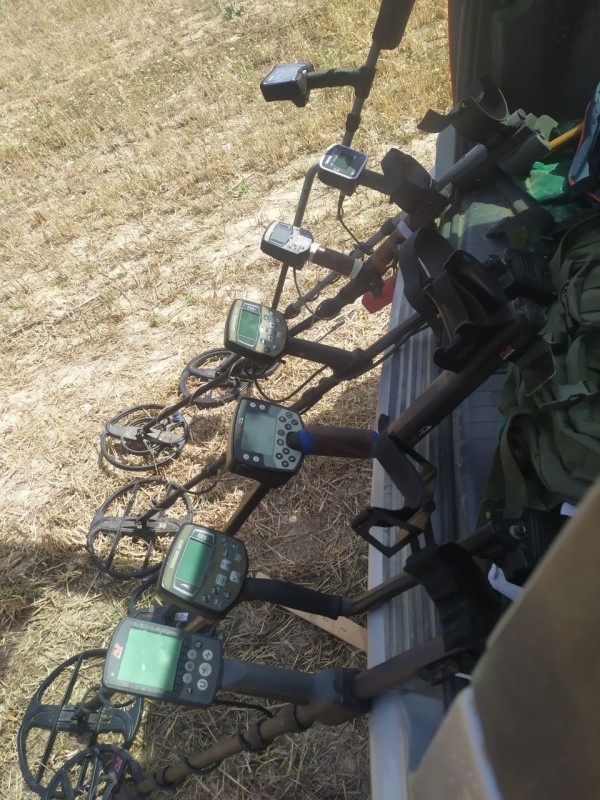-
Posts
1,331 -
Joined
-
Last visited
-
Days Won
1
Content Type
Forums
Detector Prospector Home
Detector Database
Downloads
Everything posted by EL NINO77
-

New Rutus Detector Announced
EL NINO77 replied to xawi29's topic in Metal Detector Advice & Comparisons
Now specifically for the Rutus VERSA... VERSA has its coin-type audio profile stored in 1 tone, in Pitch tone, and in User profiles 1,2,3 .. where you can use Tone break if you reduce the discrimination lower than 0.. in User profiles you can adjust the multitones yourself for each VDI number, that means 120 tones..-in multitone.. VERSA 1tone /coin profile/ ---------------------------------------------------------------------------------- VERSA USER profil 1 -Multitone / coin type / My other favorite multi-tone User profile 2 /coin type/ -------------------------------------------------------------------------------------- 2-ton, 3-ton .and 6 Relict type profile.. have a fixed border between a ton of iron and a ton of non-ferrous metals.. Versa 2 tone audio profile/relict type/ VERSA 3 tone audio profile.../relict Type/ VERSA 6 tone audio profile /reclict Type/ -

It Will Arrive In A Few Days.
EL NINO77 replied to George Kinsey's topic in Metal Detecting For Coins & Relics
...what was the practical depth of detection on Nickel, dime and quarter in the field?.. I ask for curiosity's sake.... I was born in 1973.... -

New Rutus Detector Announced
EL NINO77 replied to xawi29's topic in Metal Detector Advice & Comparisons
Alain and JCR .. since in the last few days I have been detecting a couple of times from the Atrex with a small 12cm concentric coil and .. from the VERSA with a 23DD coil, so I will be able to describe my observations from the detection as well as write something about the sound profiles of the VERSA.. ...as for 2D and 3D separation tests and practical detection ... it should look something like this ... like with Atrex ... "3D separation test"..A very small 14mm-0.5gram hammered coin is placed at a depth of 16cm !!! and practical unmasking in detection... Atrex found the last two coins masked by iron in this field... the depth of the found coins was...15cm and 17cm.. I previously detected in this field as the last detectors here were Equinox 8OO, Vanquih, Tesoro Mojave, ORX with white 9" round and 5x9.5" elliptic coil, Vista gold Gain, and these detectors passed these 2 coins... .. as they also did not find any coin targets on this terrain...other than various small pieces of metal.. Only Tesoro Mojave managed to unmask the penultimate coin after these detectors... at a depth of about 15-17 cm...I think it was also due to the 7" concentric coil on the Tesoro.. even though Vista gold Gain is on the picture... you can see a larger aluminum coin in a plastic container on the table that was unmasked by Mojave... ----------------------------------------------------------------------------------- This will give you a lot to think about how it is possible that after so many detectors, Atrex was able to unmask the last 2 coins found on this field...But also shows the excellent detection capabilities of this detector..!!! -
That's a very interesting observation... I'll try to test it on my PI ATX on a 25 kg bag of pure magnetite.. when I get home from Spain.. My tests with the PI ATX on a 25Kg bag of pure magnetite helped me to find a fairly optimal setting for this PI detector... as well as to find out its reaction to such extreme conditions... Ps ..One thing..I also think that the classic DD coil on the Axiom could be a coil for extreme conditions...Remember that the DoD coil that the AXIOM has is extra sensitive to extremely very small targets and that means that in extreme cases you have to reduce a little from a non-optimal setting of the detector, the setting of the detector.. which is intended for less extreme terrains..
-

Mixed Bag Of Detectors.
EL NINO77 replied to George Kinsey's topic in Metal Detecting For Coins & Relics
George, do you have a favorite coil for that detector from your collection of detectors... and why is it that particular coil? -
One of the important features of the CTX 3030 is the Coin-Ferrous mode... because it is more stable on the signal and VDI, which gives you in the low conduct and medium conduct coin to the line11:00-12:00 and more, where the Etrac in such a case already gives a reasonably good tone, but essentially more unstable VDI... This gives you the possibility to use a relatively strong Iron mask filter with the CTX 3030... to eliminate a greater amount of iron waste...
-

New Rutus Detector Announced
EL NINO77 replied to xawi29's topic in Metal Detector Advice & Comparisons
Alain...I tested VERSA on a 23DD coil and ORX on a round HF coil in the classic 2D original Monte Nailboard test where both detectors achieved the same results in separation.. Between VERSA at 30-40 khz and ORX at 30 khz ...there is no difference in 2D separation... VERSA in 18khz /Atrex simulation/ and 40 khz ./VERSA/ ----------------------------------------------------------------------------------------------------- ORX in 30 khz... -------------------------------------------------------------------------------------------------------------------- If we move on to the 3D deep eeparation tests, VERSA is at least on par with ORX with the same iron discrimination setting.../ elimination of the signal on the nail.../ ORX in the same test done at the same time.... IF you set the discrimination of both detectors to the same level - so that they eliminate the signal with a nail... both detectors can unmask a small nickel coin at a depth of 11 cm...!!! This test was done in the month of October last year.....-and it showed that the unmasking of Versa on deep coins in iron is excellent -and at the level of ORX.. _________________________________________________________________________________________________________________________ Now I will devote myself to my "Iron carpet" Test "...since in my detection I often move on narrow stone roads which in ancient times were used for the movement of people, wagons and cattle...a large amount of iron, nails and pieces are stored on these narrow stone roads broken horseshoes or you can even find lost whole horseshoes... I don't have to say that such an environment is very difficult to detect and unmask the small coins that are found here... and you need really good separation detectors to be able to successfully detect other potentially good targets masked by iron.. The amount of iron here really exceeds the simulation of the number of nails in the Monte Nailboard test... and that's why I decided to simulate the extreme pollution of the terrain that is densely occupied by iron... and I did the "Iron Carpet Test"... Because... it had a 12cm concentric coil on an ATREX/ALTER71, it passed the Monte Nailboar Test perfectly... and also showed excellent unmasking of targets... and it brought more beautiful coins. in a field. which was previously heavily traversed by various detectors and coils... decided I tested this coil again on some difficult separation test that would confirm or disprove its excellent 2D and 2.5D separation properties ..but also with the help of such a test I found the optimal detector setting for this type of separation for the given coil.... The difficulty of my "Iron Carpet" test is really extremely high.. but it will really show whether the tested detector and coil have any advantage in unmasking.. -

New Rutus Detector Announced
EL NINO77 replied to xawi29's topic in Metal Detector Advice & Comparisons
With Atrex, it's very simple... you select the Coin audio profile... and by setting the discrimination you determine what you want to hear as a ferrous signal and what you want to hear as a non-ferrous signal...as is the case with every detector on the market... As a user of Rutus detectors since 2012, I have never had a problem with this... Audio relict Relict has a set of tones fixed as the limit of iron and the limit of non-metal, because it is intended for relict searching in Mix mode... Maybe someone doesn't notice the differences, because they don't read the manual...detector.....but it's easy to understand... And you also have 3 user audio profiles where you can edit all 180 tones - by VDI numbers .. according to your own needs...*!!! But let's return now to Rutus ..Rutus VERSA and its tone audio profile... -

New Rutus Detector Announced
EL NINO77 replied to xawi29's topic in Metal Detector Advice & Comparisons
Rutus Atrex has 2 types of Audio profiles available... the Coin audio profile and the Relict audio profile..!!! The following tone type is an audio tone of the type Coin 1, Coin 2, and Coin 3... which are set to work with the dissimulation shift as a tone break.., because the audio profile of coin 1 is actually 2 tones where 1 tone is in the tone break is sound of iron with setting Iron volume!!! + another ton above the discrimination threshold for non-iron targets..!!!. Audio Profile type Coin 1 ... ---------------------------------------------------------------------------------- Audio profile type Coin 2.. ----------------------------------------------------------------------------------- Audio Profile type Coin 3.. Audio profiles of the type "Coins 1,2,3" are still profiles with 1,2 or 3 tones for non-iron targets together with an iron tone - where the volume of the iron tone is adjusted in the "Iron volume" setting ... and where the "Tone break" limit " determines the Discrimination setting.....!!! ---------------------------------------------------------------------------------------- The second type of Audio is the audio tones of the Relict Profile where the tones are divided and the iron tone is in the range -90VDI to 0 VDI...and the tones of non-ferrous targets are set in the range VDI +1... to VDI +90... Relict 1,Relict2 and Relict3 tone Audio Profile... ---------------------------------------------------------------------------------- ....You also have 3 user profiles in Atrex where there is tons of audio. you can edit as you like.. for example like this: -

Detech Ultimate 9 " Coil White's DFX Mxt, M6
EL NINO77 replied to ALQ-141's topic in White's Metal Detectors
Yes, if you have a Rx gain of 9 in the signal under 40% in Tx Bost ON... then it's a really good coil... because in practice you can use in TX Boste -ON....RX gain to 8... max.. in light terrain... in more difficult terrain, reduce the RX gain to 5... if you have TX Boost on.. as for this 9" ultimate coil - it meets the very demanding criteria of the test.. on my test field.."4x4" I think this 9" ultimate coil fulfills the criteria of being one of the best coils for MXT Pro: 1. Detects all 4 hard targets.. small *14 mm silver earring at 20 cm, small 13.5 mm -0.5 gram silver hammered coin at 23 cm, extra small O ring 3.5x 5 mm - 0.05 gram gram of gold at 10 cm and 50 eurocent coin at a depth of 38-39 cm.. 2. It gives correct VDI targets for 2 small.. but very deep targets.. + for extra deep 50 euro cent coins - at a depth of 38-39 cm and 0,05 gram gold at a 10 cm depth ... it can give a good audio signal without VDI.. 3. The MXT Pro.. detector is very stable even at the +3 gain setting... which allows for a really good depth of detection.. -

New Rutus Detector Announced
EL NINO77 replied to xawi29's topic in Metal Detector Advice & Comparisons
Rutus 12cm/4.75"/ small concentric coil for Rutus detectors ATREX/ALTER71 is one of the coils that I would like to see also for the Rutus VERSA detector.... The 2D unmasking capabilities are amazing... I did a really difficult amplified Nailbord Test. - "Carpet of Nails"..where detectors on larger coils will only fight with iron signals.. -

Detech Ultimate 9 " Coil White's DFX Mxt, M6
EL NINO77 replied to ALQ-141's topic in White's Metal Detectors
Richard, it's very easy to find out... how this 9" ultimate coil will behave on your whites SpectraV3. Otherwise, in my opinion, it is also an excellent coil for my MXT Pro... for its depth range, VDI targets as well as the sensitivity and range of the coil for very small...but deeply placed targets -
I see a sufficient number of European detectors... that means you know how they work... and what is important is that you know how they work... yes, some of these also deserve to be in my hall of fame.*!!!
-
George, we could go to a duel,,, but one thing still interests me...👍. Your Opinion on your various detectors... What model of detector and in what detection situations would you take it... ? Only a few people have such experience as you... in such questions...
-

Problem With Telling Good Targets Next To Iron
EL NINO77 replied to stateguy's topic in Minelab Manticore Forum
The factory setting of the Beach program... for Euquinox 900 uses the recovery speed 6 setting - which is a really good setting for unmasking coins with iron,,,,, In my opinion, you had ....the recovery speed setting on Manticore significantly lower ... and therefore Manticore was not optimally set for such a separation situation.... -
I thought of something like searching for targets in allmetal,,, but checking the found targets,,, as the next target check for discrimination 0/can also be set to 1 or 2 for an even better and more accurate ID.../ Clearly, the smoothness of the detection is significantly weaker - that's why it is not very suitable for normal detection..., but it can be useful for the next, more precise control of the VDI target...
-
Midalake, thank you for the comparison... I have one question... if you switch from horseshoe mode to discrimination mode on the EQ 800 when checking the target... you will be able to improve the VDI identification of the target... - even if at the price of, for example, a less smooth audio signal... ?
-

Fisher F19 Ground Balance Question
EL NINO77 replied to Rick N. MI's topic in First Texas - Bounty Hunter, Fisher & Teknetics
Carl...thanks for explaining the matter...can you expand on this topic?,,, I think it will clarify a lot of things... Another thing is that the Tek G2 / Fisher F19 platform itself hides a strong "all in one" potential. -

Fisher F19 Ground Balance Question
EL NINO77 replied to Rick N. MI's topic in First Texas - Bounty Hunter, Fisher & Teknetics
It's like Steve says...if the detector and coil are properly calibrated, you should expect the best results in the field with the correct ground balance.-and the deep signals on all metal will not be washed out..sometimes fine tuning/early is it. .retuning the gb detector/ to + enables a better response of the detector to very weak signals. But it's not a rule... As for the F19, which is very similar to my tek G2.. I found out that the correct ground balance of the G2 on the field ... has a good effect on the discrimination of iron ... especially in wet terrain.. it is very visible.. If you want to increase the sensitivity of All metal, or the volume of weak signals, I would recommend a mod for powering the detector using a battery from the classic 9 volts to around 12-14 max volts... because the audio of the detector is powered directly from the battery and the volume of the detector is directly proportional to the voltage battery... You won't get a greater depth of detection with the discrimination mode, but such a mode will really strengthen weak signals in detection... and also significantly strengthen the signal when working on all metal... Another good advice for the F19 is ... if you want better detection results, use a different coil ... for better separation of the nel snake coil ... and for greater depth ... 13" ultimate coil... the detection results on these coils are really visibly... -

The "mad Scientist" At Work!
EL NINO77 replied to George Kinsey's topic in Metal Detecting For Coins & Relics
Blisstool? ... George...? -

Is The 8" Garrett Atx Mono Coil Worth It?
EL NINO77 replied to Lead Detector's topic in Garrett Metal Detectors
I came across a very interesting observation from my colleague Ricardo... about the stability of the ATX... and the fact... that it is good to change the batteries in the ATX even sooner... as the indicator will show... low battery... and then the detector will be stable work ...... And I'll admit that in a similar situation ... where replacing the ATX batteries also helped me... -

Need A New Pi For Beach Detecting
EL NINO77 replied to Hard Prospector's topic in Metal Detector Advice & Comparisons
Bklein, I think it could be an interesting topic for a new thread...which can further explain the differences between PI and VLF detectors in such demanding detection conditions ... -

Need A New Pi For Beach Detecting
EL NINO77 replied to Hard Prospector's topic in Metal Detector Advice & Comparisons
When I tested my detectors in 2021...on variously mineralized black sand.... I also did a few tests for 1 gram gold and gold 0.1 gram gold ...on a very concentrated box with Black Sand with 25% of magnetite in the sand mixture... You can see the results of some tests here: In addition to my VLF detectors, I used a PI Garrett ATX as a reference detector.. Minelab EQUINOX 800 MXT PRO... XP ORX -

Need A New Pi For Beach Detecting
EL NINO77 replied to Hard Prospector's topic in Metal Detector Advice & Comparisons
Bklein I was thinking about recovery speed..... at Manticore... Otherwise, various pinpointers are relatively resistant to the mineralization of the terrain, especially when they have GB adjusted to the terrain... -

Need A New Pi For Beach Detecting
EL NINO77 replied to Hard Prospector's topic in Metal Detector Advice & Comparisons
It shows a high concentration of magnetite in the sand...but not so high that it overloads the detector...,, maybe somewhere around 20% of the magnetite content in the sand...... How did you set the recvery speed on the Manticore?.. In any case... here you can see that the discrimination work of the VLF detector on such strong mineralization is no longer effective..but one of the possibilities is to use open discrimination and use it in a similar style as an all metal detector,,,

